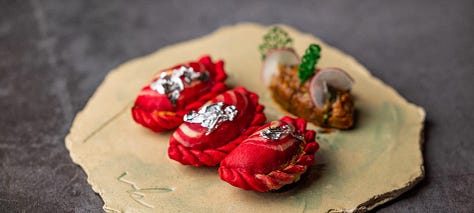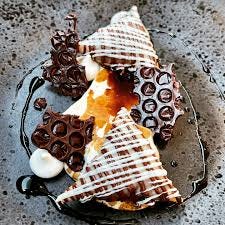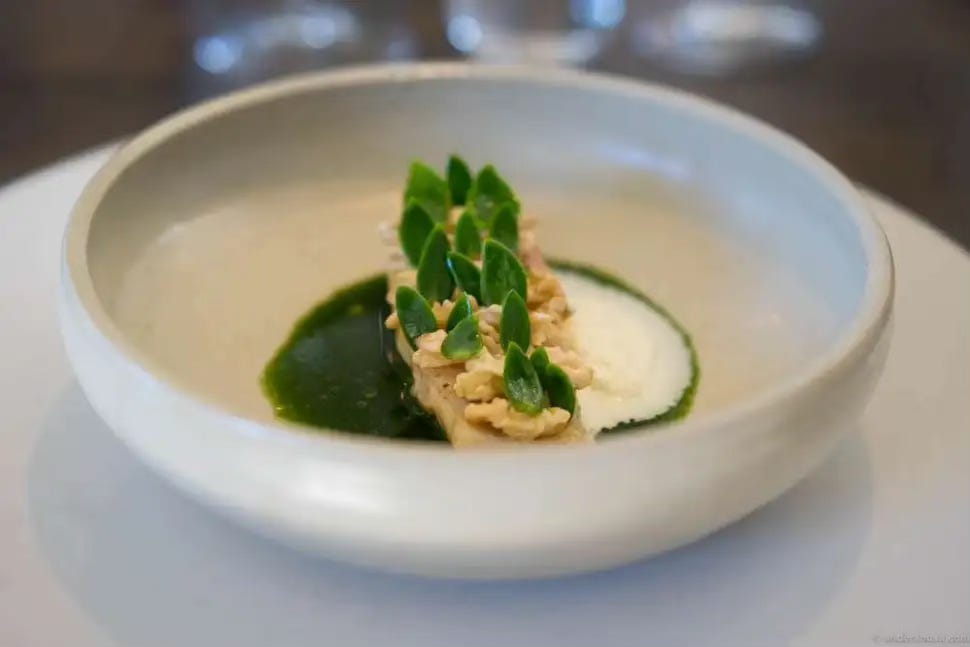Culinary Diplomacy
How Food Connects the World
Food has never been bound by borders—it has always traveled, transformed, and taken on new identities with each journey. I think of it as “Culinary Diplomacy.” Cuisine connects the world via the artistry of culinary visionaries who blend heritage with innovation, reshaping the way we experience food.
From Vineet Bhatia’s elegant reinterpretations of Indian flavors to Joan Roca’s mastery of modern Spanish gastronomy, these chefs push boundaries while honoring tradition. Whether through Garima Arora’s fusion of Indian and Thai influences, René Redzepi’s revival of foraging and fermentation, or Massimo Bottura’s reinvention of Italian classics, each plate tells a story of evolution.
At its core, cuisine is more than sustenance—it is a shared language, a bridge between cultures, and an ever-evolving expression of creativity that brings the world together, one dish at a time.
The Global Evolution of Food
Long before the advent of modern transportation, food had already begun its journey across continents, evolving along the way. Many dishes now synonymous with certain nations were originally foreign imports, their identities shaped by migration, trade, and adaptation.
Consider ramen, which originated as wheat noodles before Japan transformed an integral part of its culinary heritage. Or the croissant, whose roots trace back to Austria before the French refined it into a pastry icon. Even the tomato, a staple of Italian cookery, was only introduced to Europe after Spanish explorers brought it from the Americas.
Food has always transcended borders, absorbed influences and reinvented in new contexts. Today this process still continues, only now, it is driven by chefs who blend tradition with modern innovation, using cutting-edge skills to redefine how we savor familiar flavors.
Pioneering Chefs who are Redefining Cuisine
Vineet Bhatia elevates Indian cuisine to Michelin Stardom.



One of the most influential figures in contemporary Indian gastronomy is Vineet Bhatia, the first Indian chef to receive a Michelin star. Rather than serving conventional curries in ornate copper bowls, he reimagined Indian fare through modern, plated aesthetic.
His approach to dishes such as deconstructed black dal, tandoori-spiced vegetables, and chocolate samosas showcases Indian flavors with the precision and artistry of haute cuisine. And they speak to audience who otherwise may miss the sheer pleasure of Indian flavors.
By refining presentation and technique while honoring traditional spices and ingredients, Bhatia helped shift perceptions of Indian food from rustic comfort to elegant fine dining. His work has since paved the way for a new generation of chefs seeking to redefine Indian gastronomy.
Garima Arora: the first Indian woman with a Michelin Star.
At her Bangkok-based restaurant Gaa, she merges Indian profiles with global influences, integrating Thai ingredients and contemporary techniques into her cooking.
Arora’s betel leaf with caviar and coconut exemplifies this philosophy, an elevated take on the bold, aromatic provisions of Indian and Southeast Asian street food, transformed into a refined and exquisitely plated dish. Arora’s work challenges conventions, proving that Indian essences can be both deeply rooted in tradition and boldly innovative.
Joan Roca: mastering modern Spanish gastronomy.
Spain has long been a leader in avant-garde cuisine, and Joan Roca, co-founder of the three-Michelin-starred El Celler de Can Roca, is a key figure in this movement. Roca seamlessly blends traditional Catalan flavors with modern techniques, including sous-vide cooking, liquid nitrogen applications, and multi-sensory dining exposures.
One of Roca’s most famous dishes charcoal-grilled vegetable consommé, transforms simple, rustic ingredients into an extraordinary display of culinary methods. His restaurant has been named the best in the world multiple times, proving that Spanish epicureanism continues to set the standard for innovation while respecting its roots.
René Rdzepi: foraging and fermentation at Noma.
Similarly, Rdzepi, the force behind Noma, has revolutionized Nordic cookery by reviving ancient fermentation practices and embracing foraged ingredients. His work draws on traditions from around the world, incorporating the preservation methods that have sustained civilizations for centuries.
By reintroducing wild herbs, seasonal produce, and aged ferments into dining, Chef René proves that culinary innovation does not require exotic imports, sometimes, it is about rediscovering what has always been there.
Massimo Bottura: reinventing tradition.
Meanwhile, Bottura’s Five Ages of Parmigiano Reggiano, represents a different kind of culinary artistry.
In this dish, Italy’s beloved cheese is deconstructed into five textures and temperatures—crisp, creamy, airy, and beyond-offering a reimagined sensory adventure of a familiar ingredient. Little wonder that this culinary master’s Osteria Francesca has received three well-deserved Michelin stars as well as a coveted Green Star.
Massimo’s work illustrates how fine dining can both honor tradition and push the boundaries of creativity, proving that even the simplest ingredients can be transformed into something extraordinary.
The Power of the Table
Regardless of geography, culture, or history, the act of gathering around a meal remains a universal journey. It is where families bond, where strangers become acquaintances, and where ideas are exchanged.
Whether in a Michelin-starred dining room, a bustling street market, or the comfort of one’s home, food serves as a bridge between cultures. It invites us to step beyond our own culinary traditions, experience the world through taste, and embrace both heritage and innovation on a single plate.
Diplomacy happens when we sit down together at a table and enjoy each other’s cuisines.
At the core, cuisine is more than sustenance, it is an invitation to connect, to understand, and to celebrate the diversity that defines our global table.









Absolutely! Well said!